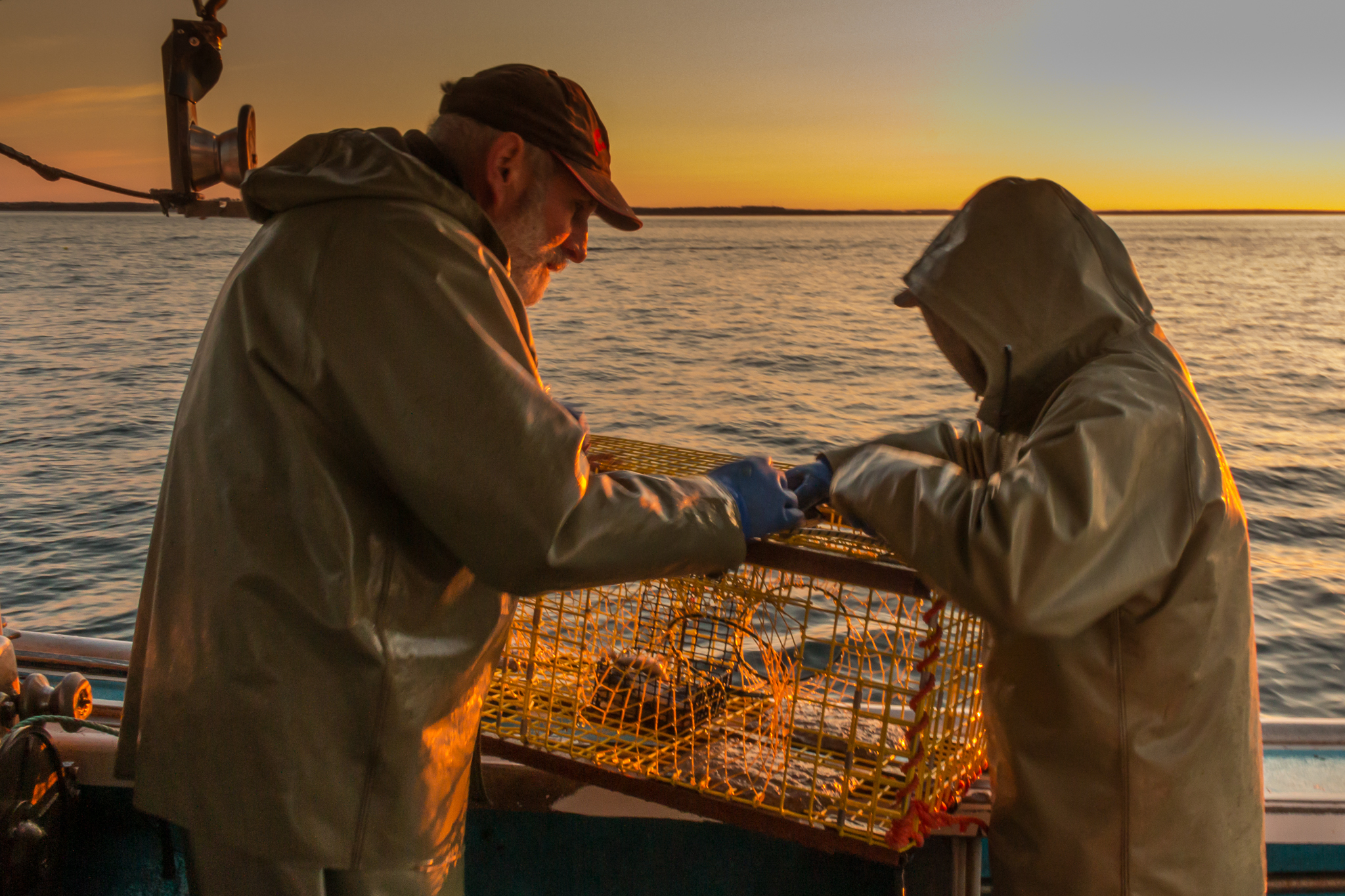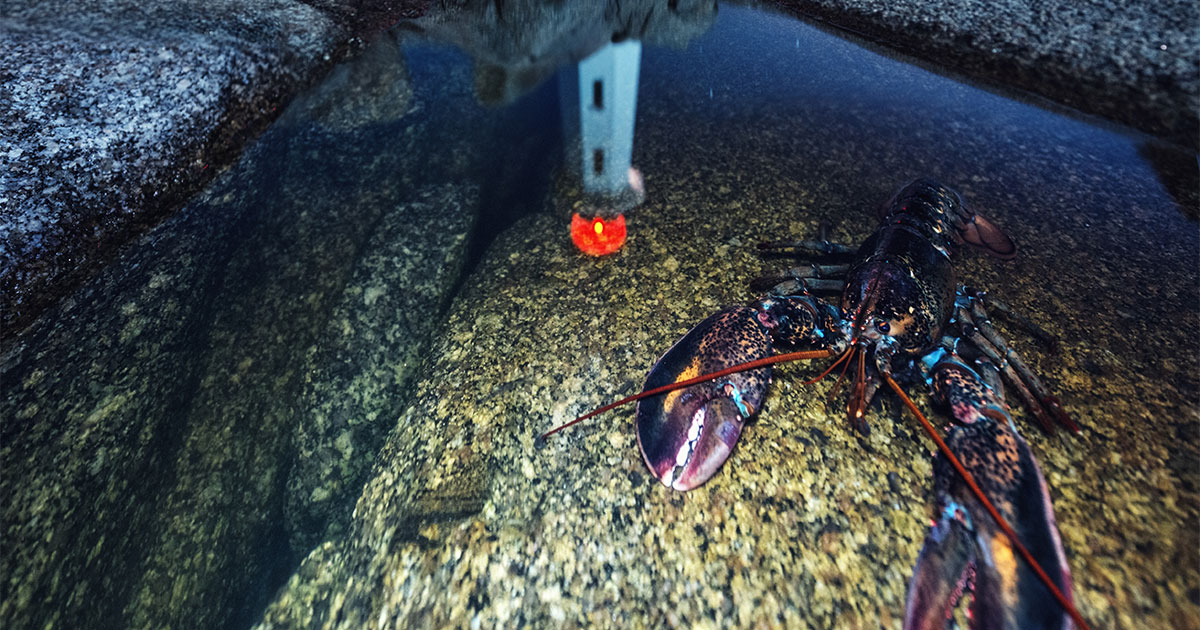Atlantic lobsters are one of the most valuable fisheries in Canada and the US, and one of the most valuable and widely traded seafood commodities in the world. However, as with all other species across the planet, they are faced with a rapidly changing environment caused by greenhouse gas emissions and in more ways than one. The ocean is absorbing heat from the atmosphere leading to rising water temperatures. But, the ocean is also absorbing excess atmospheric carbon dioxide (CO2), decreasing ocean pH—a process known as ocean acidification. As a result, these lobsters (and all sea life as we know it) are being exposed to unprecedented change. Understanding how they will respond to these changes is essential for adaptation and mitigation efforts.
Researchers from the University of British Columbia, Université du Québec à Rimouski, and Fisheries and Oceans Canada combined data from previous studies to model impacts of future climate change on lobsters. Lobsters have multiple life stages before maturing as adults. These stages differ in their susceptibility to environmental change, with younger larval and juvenile stages generally being the most sensitive to changes in ocean chemistry and temperature. Previous lab-based studies have suggested declines in survival, delayed development, and reduced growth rates in response to warming and acidification. Using spatial models, researchers can project how these valuable animals may move and respond to future environmental change.
If ocean warming and acidification continue to increase, the model suggests there will be a decline in future populations and, therefore, fisheries catch. It also revealed that the impacts of ocean warming have a considerably greater effect than ocean acidification, but together they have much larger additive effects. While the effects of warming are better understood, acidification effects are less clear, having shown a variety of responses in laboratory studies and field observations. In addition, the impacts of acidification vary by life stage, and responses have been inconsistent across studies published so far.

(Image credit: Brent Wilson)
The size of lobsters may also decrease due to warming, a consistent trend already observed in many marine species. Smaller lobsters have significant implications for the fishery. Lobsters are typically categorized into two class sizes: canner-sized for lobsters less than 1 lb (454g) and market-sized for lobsters greater than 1 lb. Canner-sized lobsters are typically sold for less than market-sized lobsters, which could mean less catch revenue. Since fishers naturally target larger lobsters, the likelihood of seeing smaller numbers in abundance, catch, and body size is heightened when considered alongside this fishing pressure.
Ocean warming has also led to poleward (in this case, towards the north pole) shifts in the distribution of marine species as they seek cooler waters, and lobsters were no different according to the model. Lobsters are moving out of areas at the south end of their distribution, such as the Gulf of Maine, and towards the outer coast of Newfoundland and Labrador into the Labrador Sea.
While modeling the impacts of climate change and fishing pressure on lobsters, the researchers also introduced some broad interventions that could mitigate the effects. Scaling back fishing effort has a considerable positive impact on the overall abundance and catch. Implementing more stringent size limits may also positively affect abundance and catch. However, climate change effects still prevail in the long run, overshadowing most of the gains from enforcing changes to fishing effort and size limits. While drastic changes in fishing regulations may help with lobster abundance with future climate change scenarios, the most effective strategy is to limit climate change as a whole. Keeping greenhouse gas emissions to the lowest possible for projected trajectories has the biggest influence on reducing impacts on lobsters.
One of the significant gains from this study is the integrated structure of the model developed by the researchers. Laboratory data were used to quantify the complex relationships of how ocean warming and acidification affect lobster biology and populations. However, there is still much to learn and integrate into these models. In the study paper published in Scientific Reports, the authors note the need for collaboration and to include diverse research disciplines to achieve more holistic and end-to-end studies. Efforts to reduce the impacts of climate change on natural and social systems will be more successful with these approaches.
Lobsters have quite the funny history as a fishery resource; they were once so abundant that they would reportedly wash up on shore stacked a few feet high. Yet, its bountiful abundance earned its reputation as a "protein for the poor." Fast forward a few decades, and these lobsters are some of the most prized shellfish, served at upscale restaurants around the world.
In late 2020, there was a significant acquisition involving the largest shellfish producer in North America—Clearwater Seafoods—that also holds many lobster harvest licenses. It was especially important as the single largest seafood investment by an Indigenous group in Canada, underscoring its importance for building healthy and integrated relationships between indigenous and non-indigenous groups to sustainably and equitably manage and utilize marine resources.
The lobster fishery supports the livelihoods of many people, and many small coastal communities were built around and are highly dependent on this fishery. If we are to protect this species and the livelihoods of these communities, we must work together to find solutions.
This story is based on the following science paper:
Tai, T.C., Calosi, P., Gurney-Smith, H.J. et al. Modelling ocean acidification effects with life stage-specific responses alters spatiotemporal patterns of catch and revenues of American lobster, Homarus americanus. Sci Rep 11, 23330 (2021). https://doi.org/10.1038/s41598-021-02253-8
This feature appeared in Environment, Coastal & Offshore (ECO) Magazine's 2022 Spring edition, to read more access the magazine here.





